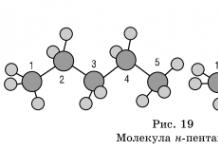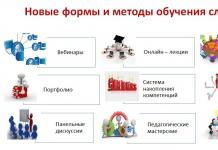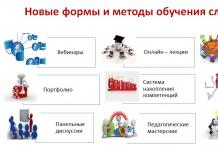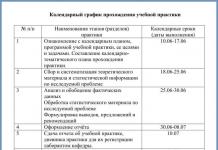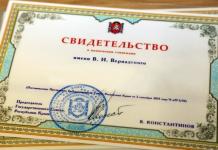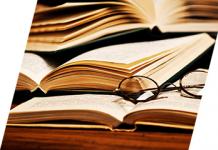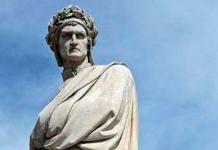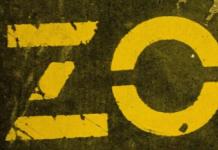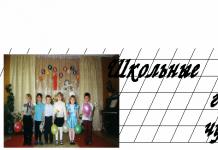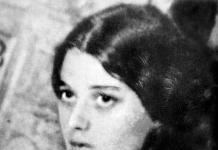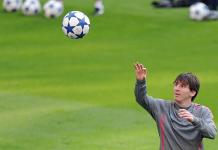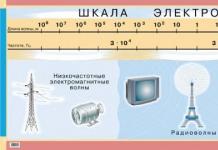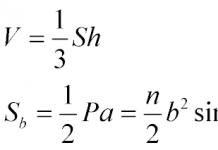Send your good work in the knowledge base is simple. Use the form below
Students, graduate students, young scientists who use the knowledge base in their studies and work will be very grateful to you.
Posted on http://www.allbest.ru/
Introduction
Teaching is a purposeful pedagogical process of organizing and stimulating active educational and cognitive activity of students in mastering scientific knowledge, skills and abilities, developing creative abilities, worldview and moral and aesthetic views.
If the teacher fails to excite the students' activity in mastering knowledge, if he does not stimulate their learning, then no learning takes place, and the student can only formally sit out in the classroom. Therefore, the problem of the formation of students' cognitive activity is relevant in teaching children.
In the learning process, it is necessary to solve the following tasks:
Stimulation of educational and cognitive activity of trainees;
Organization of their cognitive activities to master scientific knowledge and skills;
Development of thinking, memory, creativity;
Improvement of educational skills and abilities;
Development of a scientific worldview and moral and aesthetic culture.
In the pedagogical literature (Yu.K. Babinsky, NF Talyzina, IP Volkov), much attention is paid to the means of developing cognitive activity through optimization, intensification of pedagogical processes.
Likhachev B.T., considering the cognitive activity of students, pays attention to the use of game methods in the learning process.
Shchukina G.I. highlights in the learning process the need to stimulate cognitive activity.
The organization of training presupposes that the teacher carries out pedagogical activities that include a number of components, and in parallel, students carry out educational and cognitive activities, which in turn consists of the corresponding components.
Sources of information and tools for mastering educational material are means and tools for the development of cognitive activity. A special place in the formation of the cognitive activity of younger adolescents belongs to the game.
Play is one of those activities that adults use to teach schoolchildren how to communicate. In play, the child develops as a person, he forms those aspects of the psyche, on which the success of his educational and labor activity, his relationship with people.
For example, in the process of cognition, such a quality of the child's personality is formed as self-regulation of actions, taking into account the tasks of quantitative activity. The most important achievement is the acquisition of a sense of collectivism. It not only characterizes the moral character of the child, but also restructures his intellectual sphere in a significant way, and in a collective game there is an interaction of various meanings, the development of event content and the achievement of a common game goal.
The tasks of comprehensive education and training are successfully implemented only if the psychological basis of cognitive activity is formed in each age period. This is due to the fact that significant progressive transformations in the child's psyche, and primarily in his intellectual sphere, are associated with the development of cognitive activity, which is the foundation for the development of all other aspects of the child's personality.
Education as a necessary component of human life, a condition for the self-realization of a person and his rights as a measure and criterion of the quality of education, education as a connection between times - these are the humanistic values that should be at the center of pedagogical activity.
Cognitive activity in the lessons of the Russian language is an integral part of all teaching and educational work at school and is subordinated to the general goals of education and upbringing of students.
In recent years, the use of the means of cognitive activity and their content in teaching the Russian language has significantly revived. This is due to the fact that teachers every year more and more clearly realize the importance of the Russian language in mastering knowledge. Knowledge of the Russian language contributes to the better mastering of all academic subjects, as it is the foundation general education students. On the other hand, there is a growing interest in the word, the desire to master the word and on the part of students.
At the same time, the personality of the teacher plays a very significant role in organizing and conducting any form of lesson with the use of means to enhance cognitive activity.
At the same time, organizing games in the Russian language, many teachers (especially young ones) experience great difficulties: some of them do not know where to start and how to conduct such classes, others find it difficult to select material, and still others do not take into account the specifics of such work, build it is modeled on lessons or extra classes.
Meanwhile, both the goals and objectives of the classes differ significantly from the goals and objectives of the lessons and additional classes, since they are organized only for those who wish and are interested in the issues of the Russian language.
Cognitive activity in Russian language lessons has its own content, its own specifics in organization and conduct, its own forms and methods, and has the following goals: to instill a love for the great Russian language, to increase the general language culture, to develop an interest in the language as an academic subject, to deepen and expand the knowledge gained in the classroom.
The lack of pedagogical literature on this topic today poses many questions for teachers of the Russian language.
Cognitive activity in Russian language lessons should not only arouse interest, but also effectively deepen the knowledge of students in various fields of language science.
Object of study: the process of forming the cognitive activity of students.
Subject of study: explore the possibilities of the formation of cognitive activity of students (in language lessons).
Research objectives:
Consider the theoretical foundations of the problem of the formation of cognitive activity, highlight key concepts.
To characterize the ways and means of developing cognitive activity in younger adolescents.
To develop a system for the formation of cognitive activity in younger adolescents.
Hypothesis: the problem of the formation of cognitive activity in younger adolescents is one of the most urgent in the theory and practice of teaching.
At the same time, the role of various means of its activation has not been sufficiently studied. The success of students' assimilation of knowledge and skills not only in the field of the Russian language, but also in other academic subjects largely depends on the solution of this problem. It is possible to promote the development of cognitive activity if the theoretical foundations of the formation of cognitive activity are considered, the ways and means of the formation of cognitive activity are characterized, a system for the formation of cognitive activity is developed.
Research methods:
Organizational methods;
Empirical (observations, conversation in the course of educational activities and after school hours, testing, experiment);
Methods for quantitative and qualitative processing of theoretical and empirical material.
The theoretical value of the thesis is to substantiate the problem of the formation of cognitive activity, to identify the main means of its formation.
The practical significance of the work lies in the development of a system for the formation of cognitive activity (at the lessons of the Russian language).
Base of research: grade 4, Kurumochenskaya school, p. Kurumoch, Volzhsky district, Samara region.
Structure: the thesis consists of an introduction, two chapters, a conclusion, a list of used literature, an appendix.
1. Theoretical foundations of the problem of the formation of cognitive activity of students
1.1 Cognitive activity and features of its phorationing in younger adolescents
pedagogical cognitive teenager school
Teaching is a purposeful pedagogical process of organizing and stimulating active educational and cognitive activity of students in mastering scientific knowledge, skills and abilities, developing creative abilities, worldview and moral and aesthetic views.
If the teacher fails to excite the students' activity in mastering knowledge, if he does not stimulate their learning, then no learning takes place, and the student can only formally sit out in the classroom.
It is necessary to purposefully form the cognitive activity of students.
Rapatsevich E.S. in the "Modern Dictionary of Pedagogy" gives the following definition of cognitive activity: "Cognitive activity is a property of the personality of students, which manifests itself in its positive attitude to the content and process of learning, to the effective mastery of knowledge and methods of activity in the optimal time, in the mobilization of educational and cognitive goals ".
The problem of the development of cognitive activity at different times was considered by various scientists, teachers, psychologists. Modern psychological science claims that the highest form of the cognitive process is thinking. It provides a form of a person's creative reflection of reality, generating a result that does not exist in reality itself or in the subject at a given moment. Human thinking can also be understood as a creative transformation of ideas and images in memory.
The difference between thinking and other psychological processes of cognition is that it is always associated with an active change in the conditions in which a person is. Thinking is always aimed at solving a problem. In the process of thinking, a purposeful and purposeful transformation of reality is carried out.
Active cognitive activity is a special kind of mental and practical activity that presupposes a system of actions and operations of a transformative and cognitive nature included in it. In psychology, theoretical, practical and a number of intermediate types of activity are distinguished and studied, containing both those and other operations.
Theoretical conceptual thinking- this is the kind of thinking, using which a person in the process of solving a problem does not directly turn to the experimental study of reality, does not receive the empirical facts necessary for thinking, does not take practical actions aimed at real transformation of reality. He discusses and looks for a solution to the problem from the very beginning to the very end in his mind, using ready-made knowledge expressed in concepts, judgments, inferences. Theoretical conceptual thinking is characteristic of scientific research of a theoretical nature.
Visual-effective thinking is a practical transformative activity carried out by a person with real objects. The main condition for solving a mental task in this case is the correct actions with the corresponding objects. This type of thinking is a prerequisite for enhancing cognitive activity.
The difference between theoretical and practical types of thinking, according to B.M. Teplova, is that "they are in different ways related to practice ... The work of practical thinking is mainly aimed at solving particular specific problems ... while the work of theoretical thinking is aimed mainly at finding general patterns." Both theoretical and practical thinking are ultimately connected with practice, but in the case of practical thinking, this connection is more direct and immediate.
In Russian psychological science, thinking is understood as a special type of cognitive activity.
Studies by domestic psychologists show that if significant changes in the development of thinking of a younger student are primarily associated with educational activities, then in the development of a teenager's thinking, the main role belongs to the established system of social relationships with others and the desire to achieve goals.
The problem of optimizing educational activity is associated with its activation, which constantly attracts the attention of both researchers and practicing teachers. The main efforts of teachers are always aimed at finding techniques and ways to enhance the cognitive activity of students, deduced empirically... The very understanding of activation has been controversial for a long time. And this, to some extent, hindered the construction of a holistic concept in this area, a clear understanding of the system of techniques by which activation is achieved.
The definition of the activation of educational activity was given by R.A. Nizamov: "Purposeful activity of the teacher aimed at improving the content, forms, methods, techniques and means of teaching in order to arouse interests, increase activity, creativity, independence of students in the assimilation of knowledge, the formation of skills and abilities, and their application in practice." The main and most valuable in the book of R.A. Nizamova - a detailed analysis of various ways to enhance the educational activities of students. However, he reduces it to an increase in the activity of students due to the excitement of interest, hence creative independence follows. In addition, its definition is very broad, just as it was possible to define the improvement of the educational process of learning in general.
Definition of T.I. Shamova several at however, she considers the activation of "the organization in all academic subjects of students' actions aimed at understanding and solving specific educational problems." But at the same time, she understands the activity of students not just as the activity of the state, but also as the quality of the activity in which the student's personality is manifested, his attitude to the nature of the activity, the desire to mobilize efforts to achieve educational and cognitive goals.
Professor N. D. Nikandrov proposed some clarifications to the formulations of the concept and the means of activation used: “Since learning is a self-directed activity of students (that is, the subject of learning), and activity is a property of this activity, then the activation of educational activity is the control of activity, that is, its motivation, challenge, bringing to the optimal level and maintaining at this level.
Activity, in principle, is an inalienable property of a person, and the source of activity is ultimately the interests and needs of a person - material and spiritual ”. However, activity is possible at various levels of independence and creativity. Consequently, it would be more correct to speak not about the objectivity of educational activity in general, but about an increase in the level of activity and independence of trainees to the optimum. This is possible with a clear goal and a choice of activities that correspond to the tasks.
In other words, it is necessary to choose the optimal measure of management of learning, while maintaining the ratio: the greater the measure of control, the lower the level of independence in the activities of students, the smaller the measure of control, the higher the level of independence. This means that maximum activation is not always advisable, since below a certain limit of control, the student begins to experience unjustified difficulties. At the same time, above a certain limit of control, the student's activity and independence turn out to be low. But it is known from psychology that the development of thinking, like other personality traits, requires the creation of a productive psychological process. Therefore, it should be considered that learning as assimilation is possible with complete control, but learning, one of the goals of which is the development of thinking and other personality traits, certainly requires a decrease in the measure of control, greater independence. Moreover, the higher the activation in this sense of the word, the greater the developmental effect of learning, although the assimilation will be quantitatively smaller.
N. D. Nikandrov compares the teaching of a person with the work of a technical device. A computer programmed to work with an accuracy of ten digits does not give out the eleventh: the possibility of independent development is excluded here. The dialectic of the teaching and development of a person consists in the fact that he can always, with a certain exertion of forces, do a little more than is usual for him (within the "zone of proximal development"), and in the process of this activity a micro-stage is achieved in the mental, and more widely - in personal development.
The same can be expressed in a slightly different way. Acting according to the image or algorithm, i.e. in the case of complete control, a person shows only performing, non-creative activity. The development is minimal; it is limited only by the speed, by the precision of the skill that is acquired. Some removal of the completeness of control leads to an increase in independence and creative activity, and then development includes the formation of a higher level of personality traits, primarily thinking.
Of course, to reduce the entire problem of enhancing cognitive activity to a decrease in the measure of its control would be an extreme simplification and would be fraught with the danger of an absurd conclusion: the less the instructor's leading role (formative influence), the more active the student, and therefore the better. One of the serious limitations here is the motivation of the student's activity.
With high motivation, a decrease in the control measure leads to a corresponding increase in activity; with low motivation, the difficulties that arise further reduce interest in the subject and can generally lead to the exclusion of the student from purposeful activity. The second limitation is associated with the level of development of the personality of each student and especially those aspects of his psyche that directly affect learning (thinking, memory). Naturally, the level of knowledge, skills and abilities is also very significant.
So, once again, we emphasize that it is not the maximum, but the optimal activation that is important, depending, first of all, on the goals of training (1), then on the level of development of the trainees (2).
Usually, speaking about the activation of learning, they mean mainly the activation of the thinking of trainees. That is why in the 1980s, the generally correct demand that the school of memory give way to the school of thought became widespread. Activation issues are most often associated with the use of problematic elements in teaching. And this approach does not raise doubts: it is thinking that distinguishes a person from an animal, we owe it to progress in general and to each concrete achievement in material life, science and culture.
The paths to this optimum depend on many reasons and, to a decisive extent, on the goal of learning. If assimilation is in the first place in terms of importance, then it is necessary first of all to activate perception and memory; if development tasks prevail, activation of thinking is required. But since the driving force is in any case needs, it is necessary to create (evoke) and then maintain the appropriate motivation.
It is known that one of the essential features of adolescence is rapid physical and sexual development, which is recognized and experienced by adolescents. But in different adolescents, these changes proceed in different ways, which is largely determined by how adults do not take into account the effect of changes in the adolescent's body on his psyche and behavior. At this age, increased irritability, excessive touchiness, irascibility, harshness, etc. are often observed.
Physical and sexual development generates the adolescent's interest in the other sex and at the same time heightens attention to his appearance. But adolescents are neither socially nor psychologically ready to solve their problems correctly (which creates great difficulties for them). And the behavior of a teenager is determined by how adults help him to resolve the arising internal contradictions.
For each age and for each child, their own system of relationships with the social environment is typical, which determines the direction of his mental development and academic success.
The peculiarity of the social situation of adolescent development is that he is included in a new system of relations and generalization with adults and comrades, taking a new place among them, performing new functions.
Compared to a younger student, a teenager must establish relationships not with one, but with many teachers, taking into account the peculiarities of their personality and requirements (sometimes contradictory). “All this,” notes L.I. Bozovic, - defines a completely different position of students in relation to teachers and educators, as it were, emancipates adolescents from the direct influence of adults, making them much more independent. " But the most important change in the social situation of adolescent development, emphasizes L.I. Bozovic, consists in the role that the collective of students, as well as various extracurricular organizations, play during this period. Students are involved in various types of socially useful activities, which significantly expands the scope of social communication of a teenager, the possibility of assimilating social values, the formation of personality thinking, and cognitive activity.
Although learning remains the main activity for him, the main neoplasms in the adolescent's psyche are associated with social interaction. This is due to the fact that the adolescent's activities related to interaction with the social environment to the greatest extent satisfy the dominant needs of the age - the need for communication with peers and the need for self-affirmation.
Satisfying these needs, adolescents learn the morality of society, develop views on certain issues, rules of behavior.
Teenagers are attracted not only by the content, but also by the form of activity. They are attracted by romance, they like hiking, travel, research activities. In general, adolescents tend to strive for "distance." Cognitive activity at this age increases, as conditions are created for the development of curiosity, interest through the organizational forms of work in the classroom.
The youngest teenager tries to show his cognitive activity in a positive attitude to the content and the learning process, he develops the ability to effectively master knowledge and methods of activity in the optimal time. Their cognitive activity is manifested through the mobilization of moral and volitional efforts to achieve an educational and cognitive goal.
When organizing work with adolescents, the teacher must take into account that their behavior and activities are significantly influenced by the opinion of their comrades. In all actions and deeds, they are guided, first of all, by this skill.
The teacher for teenagers is not such an indisputable authority as for younger students. Adolescents have high demands on the activities, behavior and personality of the teacher. They constantly evaluate the teacher, and build their attitude towards him on the basis of value judgments. It is very important that the opinion of comrades, the collective, the opinion of the adolescent himself coincide or be similar to the opinion of educators and parents. Only in this case it is possible to resolve the contradictions that arise and thereby create favorable conditions for normal development teenager.
The constant interaction of a teenager with his comrades gives rise to his desire to take a worthy place in the team. This is one of the dominant motives of adolescent behavior and activity. The need for self-affirmation is so strong at this age that in the name of the recognition of comrades, a teenager is ready for a lot: he can even sacrifice his views and beliefs, take actions that are at odds with his moral principles.
The need for self-affirmation can also explain many facts of violation of norms and rules of behavior by the so-called difficult teenagers. Losing credibility in the eyes of your comrades, dropping your honor and dignity is the biggest tragedy for a teenager. This is why the teenager reacts violently to negative remarks that the teacher makes to him in the presence of his peers. He considers such a remark as a humiliation of his personality (similar phenomena are observed in the reactions of adolescents to the remarks of comrades and parents). On this basis, conflicts often arise between adolescents and the teacher, and the adolescent becomes difficult. " Only tactful treatment of a teenager, only ensuring his emotional well-being in the school team create a psychologically favorable basis for effective influence on the teenager.
The teenager is actively looking for true friends, but does not always find them. This is also the difficulty of age.
As studies show (MA Alemaskin), 92% of "difficult" adolescents were among the isolated schoolchildren. This suggests that such adolescents do not have a strong connection with classmates, and their relationship is not successful. That is, such adolescents practically lacked one of the spheres of social interaction. In turn, isolated “difficult” ones not only communicate with each other, but also form a small group at school with their leaders and common interests.
In early adolescence, a new social position personalities - students, that is, a direct participant in one of the forms of socially significant activity - educational, requiring a lot of effort. During this period, new requirements are imposed on the student, he has new responsibilities. New companions, new relationships with adults also require a certain amount of moral effort and experience of engaging in business relationships.
Psychologists believe that in general, the level of mental and physical development of children 10-11 years old - allows them to successfully cope with systematic educational work in the context of a comprehensive school. At the same time, one has to take into account that at this age children are distinguished by increased excitability, emotionality, rather rapid fatigue, instability of attention, and situational behavior. The cool form of teamwork causes psychological difficulties for many children.
The physical and mental well-being of adolescents usually stabilizes. But this happens on condition that adults take into account the new situation of children, act with an understanding of their developmental psychology, use specific school forms and methods of work.
The important component of social interaction that we are considering that affects the development of a teenager is school. At the present time, its position has changed significantly. At the beginning of the New Age, the teacher “appropriated” to himself a part of parenting functions. Nowadays, some of its functions have become problematic. The school remains the most important public institution that provides children with a systematic education and preparation for work and social and political life. However, the media and out-of-school institutions, while expanding the horizons and range of students and in this sense complementing the school, at the same time constitute a kind of competition for it. School is now rarely the focus of the entire cultural life of adolescents, who have clubs, sports communities, etc. at their disposal. The authority of a teacher today depends more on his personal qualities than on his position. Earlier, when the teacher was the most educated, if not the only literate in the village, it was much easier for him.
The problem of individualization of upbringing, training and development of thinking in adolescents within the framework of the mass school is also very complex.
The task is not to return the school to the position of a self-sufficient "world in itself" - the school, like the family, has never possessed this status, and the very dream of it is a conservative utopia painted in patriarchal sentimental tones - to make it the organizer and coordinator of the entire upbringing system of the younger generation. But the removal of a significant part of the work outside the school building and systematic, and not occasionally, cooperation with out-of-school - and not only pedagogical - institutions inevitably mean a serious breakdown of the usual forms of the educational process that have been taking shape since the 17th century, into the flesh to organized according to the principle formal age homogeneity of the school class.
Thus, in the development of thinking in both older and younger adolescents, the main role belongs to the system of emerging social relationships with others. However, in adolescents, cognitive activity is more purposeful and has a vocational guidance character.
Teens can already think logically, engage in theoretical reasoning and introspection. They talk relatively freely on moral, political and other topics that are practically inaccessible to the intellect of a younger student. Children have the ability to draw general conclusions based on particular premises and, on the contrary, move to particular conclusions based on general premises, i.e. ability to induction and deduction. The most important intellectual acquisition of adolescence is the ability to operate with hypotheses.
By school age, children learn many scientific concepts, learn to use them in the process of solving various problems. This means the formation of their theoretical or verbal-logical thinking. At the same time, the intellectuality of all other cognitive processes is observed.
In early adolescence, important processes associated with the restructuring of memory take place. Logical memory begins to develop actively and soon reaches such a level that the child switches to the predominant use of this type of memory, as well as voluntary and mediated memory. As a reaction to the more frequent practical use of logical memory in life, the development of mechanical memory slows down.
Adolescence is characterized by increased intellectual activity, which is stimulated not only by the natural age-related curiosity of adolescents, but also by the desire to develop, demonstrate to others their abilities, and receive high marks from them. In this regard, adolescents in public strive to take on the most difficult and prestigious tasks, often display not only highly developed intelligence, but also outstanding abilities. They are characterized by an emotionally negative affective reaction to tasks that are too simple.
Adolescents can formulate hypotheses, speculate, explore and compare different alternatives when solving the same problems. The sphere of cognitive, including educational, interests of adolescents goes beyond the school and takes the form of cognitive amateur performance - the desire to seek and acquire knowledge, to form useful skills and abilities. The desire for self-education is a characteristic feature of adolescence.
The adolescent's thinking is characterized by the desire for broad generalizations. At the same time, a new attitude towards teaching is taking shape. Children are attracted by objects and types of knowledge, where they can better know themselves, show independence, and they develop a particularly favorable attitude towards such knowledge. Together with a theoretical attitude to the world, objects and phenomena, a teenager develops a special cognitive attitude towards himself, acting in the form of a desire and ability to analyze and evaluate his own actions, as well as the ability to take the point of view of another person, see and perceive the world from different positions, than their own.
Independence of thinking is manifested in the independence of the choice of the way of behavior. Adolescents accept only what they personally think is reasonable, appropriate and useful.
Today in Russia there are about 40 million children under the age of 18, which is almost 27% of the total population. To some extent they are hostages of the ongoing socio-economic reforms and especially suffer in a situation of transition, since they belong to the most socially vulnerable segments of the population, most children today have deviations in health or are sick , the number of adolescents who use drugs and alcohol is increasing, and juvenile delinquency is on the rise. One of the reasons for the latter is the decline in spirituality, the disappearance of clear moral guidelines.
Children are deprived of the right to vote, they need to protect their rights and interests. That is why the international community has developed a new view of the situation of children in the world, according to which the interests of childhood are recognized as a priority. The UN Convention on the Rights of the Child (1989) refers to the right of children to cultural development, education and information.
The moral, intellectual, aesthetic development of children and adolescents is directly related to the spiritual food they receive. The mass media and the book play a huge role in the socialization of a person. The entry of a child into the book universe occurs primarily with the help of literature specially created for children. It is children's literature that feeds the mind and imagination of the child, opening up new worlds, images and models of behavior for him, being a powerful means of spiritual development of the personality.
The studies conducted allow us to say that the share of reading in the structure of free time of the younger generations is decreasing. It never becomes a favorite pastime for a huge number of children. of different ages... Meanwhile, in the era of continuous self-education, a developed culture of reading, information literacy - the ability to find and critically evaluate information become especially important. The situation of school reform and the renewal of educational content is characterized by a change in the information needs and repertoire of business reading and the improvement of schoolchildren's literacy.
The problem of the relationship between speech and thinking, its role in communication and the formation of consciousness is perhaps the most important branch of psychology. An analysis of how a visual reflection of reality is built, how a person reflects the real world in which he lives, how he receives a subjective image of the objective world, constitutes a significant part of the entire content of psychology. Things are not only perceived visually, but are reflected in their connections and relationships. A person can not only perceive things using analyzers, but can reason, draw conclusions, even if he does not have direct successful experience. It is characteristic for a person that he has not only sensual, but also rational knowledge, in other words, that with the transition from the animal world to human history, a huge leap occurs in the process of cognition from the sensible to the rational. The fundamental difference between human consciousness and animal consciousness is the ability to go beyond the limits of visual, direct experience to abstract, rational consciousness.
The period from 11 to 15 years is characterized by the formation of selectivity, purposefulness of perception, the formation of stable, voluntary attention and logical memory. At this time, abstract, theoretical thinking is actively formed, based on concepts that are not related to specific ideas, hypothetical-deductive processes are developing, it becomes possible to build complex inferences, put forward hypotheses and test them. It is the formation of thinking, leading to the development of reflection - the ability to make thought itself the object of his thought - that provides a means by which a teenager can think about himself, i.e. makes possible the development of self-awareness. The most important in this respect is the period of 11-12 years - the time of transition from thinking based on operating with concrete ideas to theoretical thinking, from immediate memory to logical memory. In the intellectual activity of schoolchildren during adolescence, individual differences increase, associated with the development of independent thinking, intellectual activity, a creative approach to solving problems, which allows us to consider the age of 11-14 years as sensitive period for development creative thinking.
Thus, cognitive activity, as a characteristic of a student's personality, is most effective at an age that is sensitive period for the development of creative thinking and cognitive activity. In this period, individual differences are increasing, associated with the development of independent thinking, intellectual and cognitive activity, a creative approach to solving problems.
Cognitive activity as a personality trait, which manifests itself in a positive attitude of students to the content and process of learning, to the effective mastery of knowledge and methods of activity in the optimal time, in the mobilization of educational and cognitive goals is formed in adolescence.
Younger adolescence is a sensitive period for the development and formation of cognitive activity, because during this period, individual differences associated with the development of independent thinking, a creative approach to solving problems, and cognitive activity increase.
1.2 Conditions and means of formationcognitive activity
The leading activity of younger adolescents is study. In the process of learning, the basic qualities of the student's personality are formed.
For the successful implementation of the processes of educational activity, it is necessary to create certain conditions:
The teaching activity of the teacher is also educational in nature (but depending on the conditions, this educational influence may have greater or lesser force, may be positive and negative);
The relationship between the interaction of the teacher and the student and the learning outcomes (the more intensive, conscious the student's educational and cognitive activity, the higher the quality of training);
the strength of the assimilation of educational material depends on the systematic repetition of what has been learned, on its inclusion in previously passed and new material;
The dependence of the development of students' skills on the use of search methods, problem learning.
In pedagogy today there is no unambiguous definition of the concept of "teaching means". Some authors use it in a narrow sense, referring to the means-tools that serve to achieve the general educational and educational goals of education. Others, in addition to material means-tools, include intellectual means of carrying out mental activity, which enable a person to carry out indirect and generalized knowledge of objective reality, as teaching aids. Still others subdivide the teaching aids into teaching aids that are used by the student to assimilate the material and the teaching aids proper, i.e. the means that the teacher uses to create learning conditions for the student. The fourth, considering teaching aids in a broad sense, denote by this term all the content and the entire teaching project and the teaching means proper.
Let's try to consider teaching tools as a kind of the most complete system, the various subsystems of which can represent one or another approach.
Learning tools should be understood as a variety of materials and tools of the educational process, thanks to the use of which the set learning goals are achieved more successfully and in a rationally reduced time. The main didactic purpose of the means is to speed up the process of mastering the educational material, i.e. bring closer studying proccess to the most effective characteristics. P.I. Pidkasisty understands as a means of teaching a material or ideal object that is used by the teacher and students to assimilate knowledge. This definition is the most capacious and to a greater extent reflects the modern point of view on teaching aids.
Two large groups of teaching aids can be distinguished: a means - a source of information and a means - a tool for mastering educational material. Then we can say that teaching means are all objects and processes (material and materialized) that serve as a source educational information and tools (actually means) for assimilating the content of educational material, development and education of students.
All teaching aids are divided into material and ideal. Material means include textbooks, teaching aids, didactic materials, primary books, test material, models, visual aids, teaching aids, laboratory equipment.
As ideal teaching tools are generally accepted systems of signs, such as language (oral speech), writing (written speech), the system of conventions of various disciplines (musical notation, mathematical apparatus, etc.), cultural achievements or works of art (painting, music, literature), visual aids (diagrams, pictures, drawings, diagrams, photos, etc.), educational computer programs, organizing and coordinating activities of the teacher, the level of his qualifications and internal culture, methods and forms of organizing educational activities, the entire training system, existing in this educational institution, the system of general school requirements. It should be noted that training becomes effective when material and ideal training tools are used together, complementing and supporting each other. Obviously, a teacher cannot teach a child only with words, without using visual material in primary grades and computers, laboratory and industrial equipment in pre-professional and vocational training. At the same At the same time, a large number of visual aids, laboratory equipment and computers without a teacher, his generalizations, control and personal influence will also not give high efficiency in mastering educational material. Moreover, there is no clear line between ideal and material learning tools. A thought or image can be translated into material form.
The initial provisions that served as the basis for the classification of teaching aids were proposed by V.V. Kraevsky. He considers content to be the main link in the education system. It is precisely this that is the core over which the methods, forms of organization of educational activity and the entire process of teaching, upbringing and development of the child are built. The content of education determines the way of assimilation of knowledge, which requires a certain interaction of the elements of the system and determines the composition and relationship of teaching aids.
The content of education is formed at three levels. The first and closest level to the teacher is the lesson. Based on the proposed topic and the amount of material, the teacher builds the lesson himself. He tries to summarize as fully as possible the content of education that is included in the topic of this lesson and the volume of which is more or less equal to the material presented in the textbook and the proposed set of exercises.
The second level is an academic subject. The content of a subject is usually formed on the basis of the amount of hours allocated for the subject and the social significance of those sections and blocks of educational material that are selected as teaching material. If the content of the material offered by the teacher in a specific lesson (first level) largely depends on subjective factors (the teaching system chosen by the teacher, the degree of preparedness of the students, the teacher's qualifications, the situation that has developed during the course of training, when the secondary passage of the material is also possible), then the content of the material of the subject as a whole is determined by the standards and is developed by scientists of research institutes on the orders of the Ministry of Education of Russia. True, a teacher who has been working at school for many years and teaching his subject in almost all grades can give students much more than what is laid down in the standards.
The third level is the entire learning process (throughout all the years of study in a general education institution), covering all content, i.e. academic subjects, their number and the amount of hours allocated for each of them. The structure of the learning process, the quantitative and qualitative composition of academic subjects is developed based on the social order, the needs of society and the age capabilities of students, scientists from research institutes. Educators are not involved in these developments.
At each level, the content of education has its own characteristics inherent only to this level. But if each level has its own specific content, then the means of their development must also have specific features. As the content of education changes at each level, the means of instruction also change. Each level of formation of the content of education must inevitably presuppose its own specific teaching aids.
We refer to the teaching aids of the first level as those that a teacher can use to organize and conduct a lesson. The means of teaching the second level include means that allow you to organize and carry out the teaching of any academic subject at the required level. To organize the entire process of education as a whole, the means used by the teacher in the lesson, excursion, practical lesson are no longer enough. Even the means to organize the study of a particular subject are not enough. Needed already whole system means, defining the studied subjects, their relationships and interconnections. Thus, we have a three-tier system of teaching aids.
|
Ideal learning tools |
Material teaching aids |
|
|
At the lesson level |
||
|
· Linguistic systems of signs used in oral and written speech; · Works of art and other cultural achievements (painting, music, literature); · Visual means (diagrams, pictures, drawings, diagrams, photos, etc.); · Educational computer programs on the topic of the lesson; · Organizing and coordinating activities of the teacher; · The level of qualifications and internal culture of the teacher; · Forms of organization of educational activities in the classroom. |
· Individual texts from textbooks, manuals and books; · Individual tasks, exercises, tasks from textbooks, problem books, didactic materials; · Test material; · Visual aids (objects, working models, models); · Technical training aids; · laboratory equipment. |
|
|
At the subject level |
||
|
· System of symbols for various disciplines (musical notation, mathematical apparatus, etc.); An artificial environment for the accumulation of skills in this subject Swimming pool, · A special language environment for teaching foreign languages, created in language laboratories); · Educational computer programs covering the entire course of the subject. |
· Textbooks and scholarly manuals; · Didactic materials; Primary books |
|
|
At the level of the entire learning process |
||
|
· education system; · teaching methods; System of general school requirements |
· Study rooms; · Libraries; - canteens, buffets; · Medical office; · Premises for administration and teachers; · Changing rooms; |
The means of forming cognitive activity are various types of activities in the lesson: independent work, exercises, types of problem learning, quizzes, olympiads, teacher's speech, game and game forms of work in the lesson.
The speech of people, depending on various conditions, acquires peculiar features. Accordingly, different types of speech are distinguished. First of all, there is a distinction between external and internal speech. External speech is oral and written. In turn, oral speech is monologic and dialogical.
External speech serves to communicate (although in some cases a person can think aloud without communicating with anyone), therefore, its main feature is the availability of perception (hearing, vision) of other people. Depending on whether sounds or written signs are used for this purpose, a distinction is made between oral (ordinary sound spoken speech) and written speech. Oral and written speech have their own psychological characteristics. In oral speech, a person perceives the listeners, their reaction to his words. Written speech is addressed to the absent reader, who does not see or hear the writer, and will read what was written only after a while. Often the author does not even know his reader at all, does not keep in touch with him. The lack of direct contact between the writer and the reader creates certain difficulties in the construction of written speech. The writer is deprived of the opportunity to use expressive means (intonation, facial expressions, gestures) to better express their thoughts (punctuation marks do not fully replace these expressive means), as is the case in even speech. So written language is usually less expressive than oral speech. In addition, written speech should be especially detailed, coherent, understandable and complete, i.e. processed. And it is not for nothing that the greatest writers paid special attention to this.
But written speech has another advantage: it, unlike oral speech, allows long and careful work on the verbal expression of thoughts, while in oral speech delays, time for polishing and finishing phrases are unacceptable. If you get acquainted, for example, with the draft manuscripts of L.N. Tolstoy or A.S. Pushkin, they are struck by their unusually thorough and demanding work on the verbal expression of thoughts. Written speech both in the history of society and in life an individual arises later than oral speech and is formed on its basis. The value of written language is extremely great. It is in it that the entire historical experience of human society is fixed. Thanks to writing, the achievements of culture, science and art are passed down from generation to generation.
Cognition of the laws of the surrounding world, the mental development of a person is accomplished through the assimilation of knowledge developed by humanity in the process of socio-historical development and fixed with the help of language, with the help of written speech. Language in this sense is a means of consolidation and transmission from generation to generation of the achievements of human culture, science and art. Each person in the learning process assimilates the knowledge acquired by all mankind and accumulated historically.
So, one of the functions of speech is to serve as a means of communication between people.
Another important function of speech follows from the above position that thinking is carried out in speech form. Speech (in particular, inner speech - an internal silent speech process with the help of which we think to ourselves) is a means of thinking.
Let's generalize the concept of thinking in accordance with the above material.
Thinking is the highest form of the brain's reflection of the surrounding world, the most complex cognitive mental process, peculiar only to a person.
Similar documents
Informatization of education as one of the priority directions of informatization of society. Analysis of the problems of the development of the cognitive activity of schoolchildren. Features of the influence of information technology on the development of cognitive activity of primary schoolchildren.
thesis, added 05/25/2015
The concept and essence of cognitive activity. Information and communication technologies and their classification. The practice of using information and communication technologies as a means of developing the cognitive activity of schoolchildren in mathematics lessons.
thesis, added 09/24/2017
Features of mental development and the formation of mathematical knowledge, abilities, skills in younger schoolchildren with learning difficulties. Methods and means of stimulating the cognitive activity of junior schoolchildren, the conditions for the effectiveness of their use.
thesis, added 05/03/2012
Problems of the formation of cognitive activity in preschool children. Features of cognitive activity in children with mental retardation. Classes to familiarize children with the environment as a means of developing cognitive activity.
term paper, added 06/05/2010
The essence of the concept of "cognitive activity" in the psychological and pedagogical literature. Structural and functional diagram of the formation of cognitive activity. Features and means for the development of cognitive activity in older preschool children.
thesis, added 05/24/2010
The development of the cognitive activity of younger students as a scientific and pedagogical problem. The influence of some mental processes, methods, methods and techniques, the role of informatics lessons, conditions conducive to the development of the cognitive activity of schoolchildren.
thesis, added 10/01/2009
Rules for the use of historical material in teaching problem solving. Types of arithmetic problems. Studying the methods of forming the cognitive activity of schoolchildren. Features of the historical material studied in mathematics in elementary school.
term paper, added 02/27/2011
The essence of cognitive independence and methods of its formation. Psychological and pedagogical foundations of educational and cognitive activities of students. Revealing the effectiveness of work on the formation of cognitive independent work of junior schoolchildren.
term paper, added 03/20/2017
The concept of "cognitive activity" in the psychological and pedagogical literature. Didactic game as a means of forming cognitive activity in older preschool children. Diagnostics of the level of formation of cognitive activity.
thesis, added 10/22/2013
Methods for using multimedia presentations. Diagnostic measures to determine the cognitive activity of younger students. Development of a lesson using multimedia presentations aimed at the development of cognitive qualities.
Pedagogical conditions conducive to the formation of cognitive activity of primary schoolchildren
A new educational standard came to the Russian school, which determined the goal of education - the general cultural, personal and cognitive development of students, providing such competence as the ability to learn. In the document "Federal State Educational Standard of Basic General Education" dated December 17, 2010. No. 1897 sets out new requirements for the educational and upbringing process and describes in detail the personal characteristics of the graduate ("portrait of an elementary school graduate"), the leading among which are: "owning the basics of learning", "capable of organizing their own activities", "ready to act independently" ... That is, a graduate of an elementary school must have a readiness and ability for self-development, for active learning and cognition, which is ensured by a high level of cognitive activity.
The starting point for the development of cognitive activity is the educational process. It is known that the leading activity of primary school age is educational activity, during which it is advisable to work on the formation of interest in knowledge, in learning, and the need for self-education. Teachers and psychologists have proven that the learning process is much more effective if students have a sufficiently high level of cognitive activity. It is at this age stage, when constant interests and inclinations for a particular subject are still being formed, that it is important to address the issue of developing and increasing cognitive interest in learning. Since this determines the course of the child's development at this and subsequent age stages.
Cognitive activity in younger schoolchildren does not arise by itself, it is the result of purposeful pedagogical actions. The issue of the development of cognitive activity is not completely new in pedagogical and psychological theory. At different times, many researchers were engaged.
In modern pedagogy, methods of enhancing cognitive activity have also been widely studied. The content of cognitive activity and activity was disclosed in detail in their works by M.A. Danilov, I. Ya. Lerner, P.I. Pidkasisty, T.I.Shamova, G.I.Shchukina. From the point of view of student-centered learning, this issue was considered by V.V. Davydov, N.F. Talyzina, I.S. Yakimanskaya, A.V. Petrovsky, G.G. Kravtsov, V.D. Shadrikov. From the standpoint of the activity approach, where the essence of cognitive activity is revealed as the leading type of activity, this problem was studied by V.V. Davydov, L.V. Zankov, P.Y. Galperin, Yu.M., Kolyagin, L.G. Peterson, D. B. Elkonin et al.
Despite the already existing and thoroughly studied in pedagogical practice ways of developing cognitive activity, it is not possible to fully implement them. The reason for this is the lack of substantiated recommendations on this issue, the undeveloped conditions for the development of interest in knowledge and study. Also, it should be noted that many techniques and methods for the development of cognitive activity in junior schoolchildren are focused on the traditional education system in primary school, and for new variable educational programs focused on the Federal State Educational Standard, this issue is not well covered. Therefore, in the practical implementation of existing methods of enhancing cognitive activity, teachers have difficulties.
In this regard, it becomes necessary to find the most effective ways of developing and increasing the cognitive activity of younger students.
Thus, the relevance of the topic of increasing the cognitive activity of younger schoolchildren is determined by the following contradictions: between the need to increase the cognitive activity of younger schoolchildren and the insufficient use of all opportunities to improve this process; between the need for teaching methods in the systematization of existing ones, as well as in the development of new forms, methods, techniques, means of enhancing cognitive activity and the insufficient theoretical elaboration of the pedagogical conditions for the development of this property from the position of modern variable educational programs of elementary schools, focused on the Federal State Educational Standard.
Overcoming these contradictions is the essenceProblems : What effective ways of increasing the cognitive activity of primary schoolchildren exist today?
Even KD Ushinsky said that "to inspire a student to learn is a much more worthy task than to force him." The main goal of the educational and educational processes should be the creation of such conditions for the student to want, love and know how to learn.
The search for ways to enhance the cognitive activity of students, their development cognitive abilities and independence - a task that teachers, psychologists, methodologists, teachers are called upon to solve.
It is known that human cognitive activity is a changing personality trait. When working on its development in younger schoolchildren, it is necessary to highlightpedagogical conditions , contributing to its increase in a younger student.
1. Conditions for increasing cognitive activity associated with the content of educational material :
Using the effect of "amazing", "unusual" in the content of educational material;
Compliance with the scientific principle;
Accessible and understandable content of educational material, appropriate for the age and level of students.
2. Conditions for increasing cognitive activity associated with the use of appropriate forms of organizing educational activities, certain methods and techniques of teaching :
A combination of various forms of organizing the educational and cognitive process: frontal, group, pair, individual;
The use of various teaching technologies aimed at developing and increasing cognitive activity;
Using teaching methods and techniques that most effectively activate cognitive activity;
Maximum reliance on the active thinking activity of students;
Compliance with the principle of conscientiousness and strength of knowledge assimilation is realized only in the process of active learning;
Application of the system of problem-creative tasks;
Compliance with the principle of clarity;
Selection of homework based on the principle of independence and connection with life.
3. Conditions for increasing cognitive activity associated with the role of the teacher in the learning process :
Good knowledge of the age characteristics of primary school children;
Pedagogical optimism - faith in the student, in his cognitive powers, stimulation and encouragement of children who exhibit any cognitive activity;
A friendly attitude towards students, creating an atmosphere of complete trust;
Passion for the subject and love of work.
4. Conditions for increasing cognitive activity associated with the personality of the child :
Compliance with the principle of an individual approach to students, where the level of activity depends on taking into account the real educational capabilities of students;
Use of differentiated work with students in the learning process;
Building the educational process at the optimal level of development of students, taking into account the age characteristics of the younger student;
The use of "open" assignments (according to Khutorsky), that is, adherence to the principle of linking learning with life;
Providing an opportunity to express your attitude to what is happening at the stage of reflection;
Formation of internal acceptance (awareness) by students of the goals of future activities;
Creation of a favorable emotional atmosphere for the development of cognitive activity of students.
So, the listed conditions, the observance of which contributes to the formation, development and increase of the cognitive activity of primary schoolchildren, will help: correctly determine the volume and content of educational material, choose the necessary methods, teaching aids, choose the paths of an individual and differentiated approach to younger students in the learning environment.
Municipal budgetary educational institution secondary school No. 16 of the city of Ishimbay municipal district Ishimbay district of the Republic of BashkortostanReport on the topic:
"Development of cognitive activity of primary school students"
Primary school teacher
Dyatlova E.S.
2015 year
As the priorities of educational policy, the Concept of Modernization of Russian Education names the achievement of a new modern quality of preschool, general and vocational education, which is inextricably linked with the formation of the cognitive sphere of students. The modern school is faced with the task of educating people with developed cognitive activity, able to act rationally, make reasonable decisions and choose the most effective ways to achieve their goals. The formation of these qualities begins in primary school and is basic for the successful mastery of the content of education at all levels of education. The formation of the desire and ability of younger students to acquire knowledge independently, without a teacher, is the priority task of the organizers of the educational process at school. The desire to acquire knowledge indicates a high level of development of interest in knowledge, which changes the style of students' activity, being an important factor in improving the quality of education. The realization of the cognitive interest of schoolchildren is manifested in activity, independence, a creative approach to completing tasks and a constant desire for activity.
Enhancing the cognitive activity of students is one of the urgent problems at modern level development of pedagogical theory and practice.
Pedagogical science and school practice have accumulated considerable experience in the application of methods and organizational forms that stimulate the cognitive forces of students. Interest in this aspect of learning has intensified in recent years. In the intensification of the learning process lies the possibility of overcoming the aggravated contradictions between the requirements of society for primary education and the mass teaching experience, between pedagogical theory and school practice.
Therefore, it is necessary to develop cognitive interest, the activity of a younger student in different types his activity, since the process of cognition in younger schoolchildren is not always purposeful, mostly unstable, episodic.
The problem of enhancing cognitive activity has always been faced by teachers. Socrates also taught his listeners the ability to think logically, to seek the truth by thinking. J.-J. Rousseau, in order for the student to want to learn and find new knowledge, created special situations for him, forcing him to cognitive search. Pestalozzi and other teachers taught in such a way that the student not only received, but also independently obtained knowledge. However, this problem was fully developed in the pedagogy of the 20th century. A holistic system of teaching and upbringing, based on arousing the cognitive interest of schoolchildren, on organizing their joint interested activity with a teacher, was developed by Sh.A. Amonashvili.
Schools, Piaget wrote, “should prepare people who are able to create something new, and not just repeat what previous generations did, inventive, creative people who have a critical and flexible mind and who do not take on faith everything that is offered to them. ".
Most effective means including the child in the process of creativity in the lesson are:
play activity;
creating positive emotional situations; success
work in pairs;
problem learning.
Success is the most important stimulus for vigorous human activity. This psychological phenomenon is especially pronounced in childhood, when other motives and stimuli are still unstable or weakly expressed. A child who is poorly performing, lagging behind his peers, quickly loses interest in learning and his cognitive activity in the lesson approaches zero.
Many teachers say that the success of learning is ultimately determined by the student's attitude to learning, their desire for knowledge, conscious and independent acquisition of knowledge, abilities, skills, and their activity.
Cognitive interest is formed in the learning process through the subject content of the activity and the emerging relationships between the participants in the educational process. This is facilitated by the widespread use of the factor of novelty of knowledge, elements of problematicity in teaching, attracting data on modern achievements of science and technology, demonstrating the importance of knowledge, abilities, skills, organizing independent work of a creative nature, organizing mutual learning, mutual control of students, etc.
In active perception and comprehension of the studied material great importance has the ability of the teacher to give this material a fascinating character, to make it lively and interesting. The main task of a teacher in organizing an effective educational and cognitive process is to include entertaining moments, elements of novelty and uncertainty in the material being studied, which contributes to the development of cognitive interest and the formation of cognitive needs.
It should be noted that the formation of a cognitive interest in learning is an important means of improving the quality of education. This is especially important in elementary school, when constant interests in a particular subject are still being formed and determined. In order to form students' ability to independently replenish their knowledge, it is necessary to instill in them an interest in learning, a need for knowledge.
One of the most important factors in the development of interest in learning is children's understanding of the need for a particular material being studied. For the development of cognitive interest in the studied material, the teaching method of this subject is of great importance. Therefore, before starting to study any topic, the teacher should devote a lot of time to searching for active forms and methods of teaching. It is impossible to force one to study; one must be carried away by studying. And this is perfectly true. Real cooperation between teacher and student is possible only if the student wants to do what the teacher wants. To activate the cognitive activity of children, it is necessary to introduce an element of entertainment, both in the content and in the form of work.
Cognitive activity develops logical thinking, attention, memory, speech, imagination, maintains interest in learning. All these processes are interconnected. Many teachers use various methodological techniques in the educational process: didactic games, game moments, work with dictionaries and diagrams, integration input, etc.
Play is a child of labor. The child, observing the activity of adults, transfers it to the game. Playing for younger students is a favorite form of activity. In play, mastering play roles, children enrich their social experience, learn to adapt to unfamiliar conditions. Children's interest in didactic play shifts from play action to mental task.
Didactic play is a valuable means of educating the mental activity of children, it activates mental processes, arouses a keen interest in the learning process in students. In it, children willingly overcome significant difficulties, train their strengths, develop abilities and skills. It helps to make any educational material fascinating, evokes deep satisfaction among students, creates a joyful working mood, and facilitates the process of assimilating knowledge.
Highly appreciating the importance of the game, V.A. Sukhomlinsky wrote: “Without a game there is no, and there cannot be, full-fledged mental development. The game is a huge bright window through which in spiritual world the child is infused with a life-giving stream of ideas, concepts about the world around him. The game is a spark that ignites the spark of inquisitiveness and curiosity. " In didactic games, the child compares, observes, juxtaposes, classifies objects according to certain criteria, makes analysis and synthesis available to him, and makes generalizations.
However, not every game has an essential educational and upbringing value, but only one that acquires the character of cognitive activity. A didactic game of a learning nature brings the child's new, cognitive activity closer to that already familiar to him, facilitating the transition from play to serious mental work.
Cognitive games make it possible to solve at once a number of problems of education and upbringing. First, they have tremendous opportunities for expanding the amount of information children receive in the course of learning, and stimulate an important process - the transition from curiosity to curiosity. Secondly, they are an excellent means of developing intellectual creative abilities. Thirdly, they reduce mental and physical stress. There is no direct learning in cognitive games. They are always associated with positive emotions, which sometimes cannot be said about direct learning. Cognitive play is not only the most accessible form of learning, but also, which is very important, the most desired by the child. In the game, children are ready to learn as much as they like, practically not getting tired and getting rich emotionally. Fourthly, in cognitive games, a zone of proximal development is always effectively created, an opportunity to prepare consciousness for the perception of something new.
The use of didactic games brings good results if the game is fully consistent with the goals and objectives of the lesson and all children take an active part in it. Playing with enthusiasm, they learn the material better, do not get tired and do not lose interest. In the process of playing, children develop general educational skills and abilities, in particular, the skills of control and self-control, such character traits as mutual understanding, responsibility, honesty are formed.
Cognitive interest is the highest stimulus of the entire educational process, a means of enhancing the cognitive activity of students. A variety of effective techniques awakens in children an interest and a positive attitude not only to the results, but also to the learning process itself, to the teacher, confidence in overcoming difficulties.
The formation of the cognitive interests of students, the development of an active attitude to work occurs, first of all, in the lesson. It is necessary to activate the cognitive activity of students and increase interest in learning at every stage of any lesson, using various methods, forms and types of work for this: a differentiated approach to children, individual work in the lesson, various didactic, illustrative, handouts, technical teaching aids and others. ...
It is fundamentally important that children experience the joy of discovery at each lesson, so that they develop faith in their strengths and cognitive interest. Interest and success in training are the main parameters that determine the full-fledged intellectual and physiological development, and therefore the quality of the teacher's work.
The student works in the lesson with interest if he completes tasks that are feasible for him. One of the reasons for the reluctance to learn lies precisely in the fact that in the classroom the child is offered tasks for which he is not yet ready, with which he cannot cope. Therefore, it is necessary to know well the individual characteristics of children. The task of the teacher is the need to help each student to assert themselves, to look for and find their own ways of getting an answer to the question of the problem.
Creation non-standard situations in the classroom contributes to the development of cognitive interest and attention to the educational material, the activity of students and the removal of fatigue. The most often used in the practice of teachers is a fairy tale lesson, a competition lesson, a journey lesson, a game lesson. Each of these lessons has a number of its own characteristics, but they all allow you to create an atmosphere of benevolence, ignite a spark of inquisitiveness and curiosity, which ultimately facilitates the process of assimilating knowledge.
Another method of enhancing cognitive activity is the implementation of integration. Integration is a process of convergence and connection of sciences, which occurs along with the processes of differentiation. It is a high form of embodiment of intersubject connections at a qualitatively new level of education. Such a learning process under the influence of purposefully carried out interdisciplinary connections affects its effectiveness: knowledge acquires the qualities of consistency, skills become generalized, complex, the ideological orientation of the cognitive interests of students is strengthened, their conviction is more effectively formed and all-round personality development is achieved.
XXI century is the century of high computer technologies. Modern child lives in the world of electronic culture. The role of the teacher in information culture is also changing - he must become the coordinator of the information flow. Therefore, the teacher needs to own modern techniques and new educational technologies to communicate in the same language with the child.
In elementary school, it is impossible to conduct a lesson without attracting visual means, problems often arise. Where can you find the material you need and how best to demonstrate it? The computer came to the rescue.
Over the past 10 years, there has been a radical change in the role and place of personal computers and information technologies in the life of society. In the modern world, possession of information technologies is put on a par with such qualities as the ability to read and write. A person who skillfully, effectively owns technologies and information, has a different, new style of thinking, a fundamentally different approach to assessing the problem that has arisen, to organizing his activities.
In practice, information technologies of education are called all technologies, special technical using information means (computers, audio, cinema, video).
The use of new and newest information tools leads to the emergence of new concepts in pedagogy.
When the computer began to be used in education, the term "new information technologies" (NIT) appeared. If telecommunications are used, then the term "information and communication technologies" appears - ICT.
The formation of an information culture in the school takes place, first of all, with the help and through the means of ICT.
As practice shows, it is already impossible to imagine a modern school without new information technologies. It is obvious that in the coming decades, the role of personal computers will increase and, in accordance with this, the requirements for computer literacy of primary school students will increase.
The use of ICT in the classroom in primary school helps students navigate the information flows of the world around them, master practical ways of working with information, and develop skills that allow them to exchange information using modern technical means.
The use of ICT in the classroom enhances: - positive motivation for learning - activates the cognitive activity of students.
The use of ICT in the lesson made it possible to fully implement the basic principles of enhancing cognitive activity:
The principle of equality of positions
Confidence principle
Feedback principle
The principle of taking a research position.
The implementation of these principles can be seen in all lessons where ICT is applied. The use of ICT allows lessons to be taught:
at a high aesthetic and emotional level (animation, music)
provides clarity;
attracts a large amount of didactic material;
increases the volume of work performed in the classroom by 1.5 - 2 times;
provides high degree differentiation of learning (individually approach the student, using multi-level tasks).
ICT application:
expands the possibility of independent activity;
forms a skill research activities;
provides access to various reference systems, electronic libraries, and other information resources;
in general, it contributes to the improvement of the quality of education.
Younger school age is characterized by psychophysiological age characteristics, an individual (visual, auditory) system of perception, a low degree of development of cognitive abilities, features of educational motivation.
A feature of the educational process with the use of information technology is that the student becomes the center of activity, who, based on his individual abilities and interests, builds the cognition process. The teacher often acts as an assistant, a consultant, encouraging original discoveries, stimulating activity, initiative, and independence.
The use of ICT in the classroom also contributes to:
make the lesson emotionally rich and complete, the most visual;
reducing the time for monitoring and testing students' knowledge;
learners learn the skills of control and self-control. When preparing for lessons, the teacher uses educational electronic resources:
multimedia courses
presentations for lessons
logic games
test shells
Internet resources
electronic encyclopedias.
When developing a lesson using ICT, special attention is paid to the health of students. The lesson plan includes physical and dynamic pauses, eye exercises, and the use of elements of health-saving technologies.
The use of ICT allows you to expand the scope of the textbook.
Thus, the work spent on the management of cognitive activity using ICT means justifies itself in all respects:
improves the quality of knowledge
promotes the child in general development
helps to overcome difficulties
brings joy to the child's life
allows training in the zone of proximal development
creates favorable conditions for better understanding between teachers and students and their cooperation in the educational process.
Separately, I would like to note the work on the projects.
Learning project from a student's perspective - this is an opportunity to do something interesting on your own, in a group or on your own, making the most of your opportunities; this is an activity that allows you to express yourself, try your hand, apply your knowledge, benefit and show publicly the achieved result; This is an activity aimed at solving an interesting problem, formulated by the students themselves in the form of a goal and task, when the result of this activity - the found way to solve the problem - is of a practical nature, has an important applied value and, which is very important, is interesting and significant for the discoverers themselves.
The curriculum project from the perspective of the teacher Is a didactic tool for teaching design, i.e. purposeful activity to find a way to solve a problem by solving problems arising from this problem when considering it in a certain situation.
So, this is a task for students, formulated in the form of a problem, and their purposeful activity, and a form of organizing the interaction of students with the teacher and students among themselves, and the result of the activity as a way of solving the project problem they found.
In conclusion, I would like to note that one cannot but agree with the opinion of domestic and foreign teachers and psychologists, according to which “project-based teaching should not supplant the classroom system and become a kind of panacea, it should be used as an addition to other“ types of direct or indirect teaching ”. And, as experience shows, the method of creative projects, along with other active teaching methods, can be effectively applied already in the elementary grades. At the same time, the educational process according to the project method differs significantly from traditional teaching.
Thus, the activation of the cognitive activity of students in the classroom is one of the main directions of improving the educational process at school. Conscious and lasting assimilation of students' knowledge takes place in the process of their active mental activity. Therefore, work in each lesson should be organized so that the educational material becomes the subject of active student action.
Younger school age is the age when emotions play perhaps the most important role in personality development. Therefore, the methods of enhancing cognitive activity, an individual approach, and the dosage of the complexity of tasks are of paramount importance, which make it possible to create a situation of success for each child. Each child should move forward at their own pace and with consistent success. The success of learning is achieved not so much by facilitating tasks, but by developing children's desire and ability to overcome difficulties, creating an atmosphere of enthusiasm and goodwill.
Leading teachers and psychologists note that monotonous activity inhibits cognitive activity. Performing exercises of the same type, of course, contributes to the assimilation of knowledge, abilities, skills, but also has a negative effect. Cognitive activity in this case is high only at the moment of acquaintance with a new one, then it gradually decreases: interest disappears, attention is scattered, the number of errors increases. Thus, the main task of the teacher is to build the educational process in such a way that students could establish close relationships between all stages and be able to see the final result of their work.
So, the teacher needs to try to bring the study of program material as close as possible to life, to make the learning process more emotional and interesting. This will arouse interest in new things in students of primary school age, a desire to learn about the world and, taking into account the psychological characteristics of children, help them better and easier to assimilate educational material.
Literature.
Pastushkova M.A. Formation of cognitive interests in the organization of educational activities of younger schoolchildren // Izvestiya Rossiyskogo gosudarstvennogo ped. University named after A.I. Herzen. Postgraduate notebooks: Scientific journal. - SPb .: LLC "Book House", 2007, No. 18 (44). - S. 410-413. 0.33 sq.
Pastushkova M.A. Formation of cognitive interests of primary school students as a necessary condition for improving the quality of education // Innovative technologies in education / In collection of articles. international scientific and practical conference. - Penza: PSU, publishing house "Privolzhsky House of Knowledge", 2008. - pp. 125-127. 0.2 p
Developmental and educational psychology / Ed. M.V. Gamezo et al. - M., 2004.
Gerasimov S.V. When teaching becomes attractive / S.V. Gerasimov. - M., 2003
Davydov V.V.The problem of developing education / V.V.Davydov. - M., 2003.
Zaporozhets, A.V. Mental development of the child. Fav. psychol. works in 2-хт. Vol.1 / A.V. Zaporozhets. - M .: Pedagogy, 1986.
Kikoin, E. I. Younger schoolboy: opportunities for studying and developing attention / E. I. Kikoin. - M., 2003.
Mukhina, V.S. Development psychology / V.S.Mukhina. - M., 2007.
Nemov, R.S. Psychology: Textbook: In 3 kn / R.S. Nemov. - M .: Vlados, 2000.
Rubinstein, S. Ya.On the education of habits in children / S. L. Rubinstein .. - M., 1996.
Selevko, G.K. Modern educational technologies / G.K.Selevko. - M., 1998.
1. Beloborodov N.V. Social creative projects at school. M .: Arkti, 2006.
2.Britvina L.Yu. The method of creative projects in technology lessons. // Primary school. - 2005. - No. 6.
3. Bychkov A.V. The method of projects in the modern school. - M., 2000.
4. Guzeev V.V. The project method as a special case of integrated learning technology. // Head teacher. - 1995. - No. 6.
Municipal budgetary educational institution
"Likino-Dulevskaya main secondary school No. 2"
Orekhovo-Zuevsky municipal district of the Moscow region
Speech at ShMO:
« schoolchildren in the learning process ».
Prepared
Primary school teacher
Leukhina N.A.
2016-2017 y.y.
Features of the formation of cognitive activity in younger children schoolchildren in the learning process.
Cognitive activity of students is an important factor of improvement and at the same time an indicator of the effectiveness and efficiency of the learning process, since it stimulates the development of independence, a search and creative approach to mastering the content of education, and encourages self-education.
The formation of the cognitive activity of students is one of the urgent problems of the entire educational process. In the process of developing cognitive activitythree groups of stages of knowledge assimilation can be distinguished: initial (actualization of basic knowledge, motivation and goal-setting, perception and comprehension), medium (consolidation and application), final (generalization and systematization).
Today, there are two ways to enhance cognitive activity:extensive and intense.Moreover, both of them have the same ultimate goal: the upbringing of an educated, moral, creative, socially active person capable of self-development. But the approaches to achieving the goal are different.The extensive path is being implemented, first of all, through an increase in the number of academic disciplines, or, in other words,an increase in the volume of knowledge communicated to students. The intensive path is based on the formation of a subjective, personally interested position of the student,and this implies a change in the structure itself curricula and intensification of teaching methods (developmental, personal oriented learning etc.).
The activation of cognitive activity presupposes a certain stimulation, strengthening of the cognition process. Self-knowledge can be represented as a sequential chain consisting of perception, memorization, preservation, comprehension, reproduction and interpretation of the knowledge gained. It is obvious that activation can be carried out simultaneously at all successive stages, but it can also occur at some one. Stimulates, activates cognition, first of all the teacher. His actions are to strengthen each of the stages of cognition (less often - one or more) with the help of various techniques and exercises. It is according to this logic that developmental education programs are built: through the constant organization of conditions for intensive cognitive activity to the usual cognitive activity, and then to the internal need for self-education. Consequently, we can talk about different levels of cognitive activity of younger schoolchildren in educational activities. Obviously, activity is associated with strengthening the student's subject position.
The analysis of these positions made it possible to conditionally identify four main types of educational activity and develop tactics (the nearest pedagogical interactions) and a strategy (the prospect of the development of the student's position in the educational process) of pedagogical activity: zeroactivity (pronounced object position); situational activity (mainly object position); performing activity (mainly subject position); creative activity (pronounced subjective position).The teacher is obliged to “see” and include in the cognitive activity both the student who takes a passive position, and the one who from time to time “is included” in interactive learning, and the student with a pronounced readiness for joint cognition. Let us analyze the identified types of cognitive activity from the point of view of pedagogical tactics and strategy.
First type.The student is passive, responds poorly to the teacher's requirements, does not show interest in either joint or individual work, but is included in the activity only under the pressure of the teacher. Emotional, intellectual, and behavioral skills are not developed for interactive learning. There is a pronounced object position in the educational process.
The teacher's tactics in this case are based on creating such an atmosphere of classes that would remove the student's feeling of fear and constriction. Such students are categorized as “neglected” (primarily by the teacher himself). By "replaying" past failures, they themselves in advance reduce the ability to constructively approach a new learning task, and therefore it is very important to neutralize negative memories. The main technique that helps to establish such a relationship will be the so-called "emotional stroking" (address by name, kind, affectionate tone, etc.). When working with this group, the teacher should not wait for immediate involvement in the work, as their activity may increase gradually. Do not offer them study assignments that require a quick transition from one activity to another. Give time to think about the answer, since improvisation is difficult for them. Do not confuse the answer by asking unexpected and tricky questions. Be prepared for the fact that after a break, these children switch rather slowly from intense physical activity to mental activity.
The strategic direction in working with these students is their transfer in educational interaction from a pronounced object position to a predominantly object position. This is possible due to the special atmosphere of the lessons, focused on psychological liberation and emotional inclusion of schoolchildren in common activities. Then a chain is born: a state of comfort, openness, removal of fear of teamwork, willingness to engage in cooperation with a teacher or classmates, expectation and emotional readiness to master a new type of cognitive activity.
The second type is realized mainly in the object position of the student. Characteristic indicators- showing interest and activity only in certain situations (inTeresny lesson content, unusual teaching techniques), which is more likely associated with emotional excitability, often not supported by the acquired skills for independent work. During the lesson, these students prefer explaining new material to repetition; They easily connect to new types of work, but if they find it difficult, they can also easily lose interest. They may surprise the teacher with quick correct answers, but this only happens sporadically. The tactics of educational interaction with these students is to reinforce their subjective (active) state in educational activity, not only at the beginning, but also in the process of work. The help of a teacher is invaluable here, who, if necessary, can help relieve intellectual fatigue, overcome volitional apathy, and stimulate interest. Here are some examples of activation. "Delayed answer". At the beginning of the lesson, the teacher offers students a riddle ( amazing fact), the answer to which (the key to understanding) will be opened in the process of working on a new topic. Another technique is "Interview-crossword puzzle": students fill out a crossword puzzle on the topic being studied (prepared in advance by the teacher himself or his assistants); "Aerobatics" can be called a situation when a part of the concepts of the crossword puzzle "prepares" a new topic. Schoolchildren of this type are inherent in haste and incompleteness of actions, which is why it is important for them to be able to use an answer plan, rely on reference signals, create algorithms for a particular educational action, hint pictures ("cheat sheets"), tables. But there is one feature: they are easier to remember and use those schemes that they create themselves (or together with a teacher). Thus, the strategy of the teacher's actions in working with situationally active students is not only to help them get involved in learning activities, but also to maintain an emotional and intellectual atmosphere throughout the lesson. Then the student experiences a feeling of joy and enthusiasm not only in the perception of the educational task, but also in the course of its implementation. And having experienced a feeling of success once, he will want to repeat and consolidate his achievements and for this he will show certain intellectual and volitional efforts. If the subsequent lessons do not disappoint his expectations, then the preconditions will arise for a gradual transition to a performing active type of cognition.
Thirdtype - students with an active attitude to cognitive activity, asusually loved by teachers. They systematically complete their homework, readily join the forms of work that the teacher offers. It is on them that the teacher relies when studying a new (difficult) topic, and they also help out the teacher in difficult situations (open lessons, visiting the administration, etc.). The main advantage of these students is stability and consistency. However, they also have their own problems. For perseverance and diligence, they are often called "cramps". And to some it seems that these children are easy to learn. There is some truth in this, but for some reason they forget that such seeming lightness is the result of earlier efforts: the ability to focus on the task, carefully familiarize yourself with the conditions of the task, activate the existing knowledge, choose the most successful option, and, if necessary, repeat (and more than once!) this whole chain. And these students, as well as others, need careful attention from the teacher. Sometimes they start to get bored if the material being studied is simple enough, and the teacher is busy with weaker students. Gradually, they get used to limiting themselves to the framework of the educational problem and no longer want or weaned to look for non-standard solutions. A little later, they understand that the teacher's approval can be obtained not for something "overtime", but simply for a well-done work that does not require searching for additional material.The main techniques that stimulate active students can be called all problematic, partial search and heuristic situations that are created in the classroom.For example, "problem dialogue", when, discussing the formulation of the lesson topic proposed by the teacher, schoolchildren predict its content. Or brainstorming, consisting of the following steps: creating a bank of ideas (a mandatory rule - no criticism!), Analyzing ideas (searching for a rational grain in every, even the most fantastic proposal, selecting the most productive ideas), presenting the results of the group's work and further selection ideas proposed by experts. Often, when ideas are presented, new proposals are born, which are immediately included in the discussion. You can offer students special role-playing situations. Schoolchildren can connect to the technology for assessing the oral and written answers of classmates, that is, take on the role of an "expert" (just do not forget to equip the "experts" with the requirements for assessing the answers so that there are no significant disagreements).
The creative type of cognitive activity is characterized by a pronounced subjective position of the student. These schoolchildren have non-standard thinking, vivid imagery of perception, purely individual imagination, and a unique attitude to the world around them. However, it is they who often create problems in educational activities, which are based on consistency, logic, solidity.
The activity of the teacher at this level of cognitive activity is, first of all, in the development of the very need for creativity in schoolchildren, in the desire for self-expression, self-actualization. Individual techniques that activate the creativity of students, and special creative lessons: KVNs, sports clubs, etc., can help in achieving this goal. But when working with children of a creative type, the teacher must remember about equality: every child has the right to creative self-expression. There is no need to divide children into talented and "the rest", even if creative manifestations in some way do not suit us, teachers.
Thus, cognitive activity is a complex personal education that develops under the influence of a wide variety of factors: subjective (curiosity, perseverance, will, motivation, diligence, etc.), objective (environmental conditions, teacher's personality, teaching techniques and methods). Learning activity type is a dynamic metric. It is in the power of the teacher to help the student move from the zero type to situational and, possibly, performing, creative activity. I would especially like to emphasize the idea that all students need attention and care from the teacher: both those who do not show a particular interest in learning, and those who outwardly make a good impression and, it would seem, do not need special support. Therefore, in many respects, it depends on the skill of the teacher whether the pupil will be able to prove himself in educational activities or will prefer only to sit out in the lesson.
UDC 373.3: 37.036.5 BBK 351.2
Mayorova Natalia Vladimirovna
graduate student
Departments of Pedagogy of Primary Education Chuvash State Pedagogical University
them. I. Ya. Yakovleva, Cheboksary Maiorova Natalia Vladimirovna Post-graduate Department of the Pedagogics of Primary Education
I. Yakovlev Chuvash State Pedagogical University
Cheboksary [email protected] Pedagogical conditions for the development of creative cognitive activity
junior schoolchildren
Pedagogical conditions of development of creative educational activity
of younger students
The article presents the pedagogical conditions for the development of creative cognitive activity of junior schoolchildren, presents the materials of experimental work on the development of the studied quality and proves its effectiveness.
The article presents the pedagogical conditions of development of creative educational activity of younger schoolboys, materials and experimental work on the development of the investigational quality and proved its efficiency.
Key words: creativity, activity, creative activity, creative thinking, junior schoolchildren, pedagogical conditions.
Key words: creativity, activity, creativity, creative thinking, the younger students, pedagogical conditions.
The relevance of the problem under study. At the present stage of development
pedagogical science and practice, the development of the creative activity of schoolchildren is one of the most pressing and acute problems. New state standards in the field of education imply educational results that are not limited to mastering subject knowledge, skills, and abilities. A graduate of the school, according to the Federal State Educational Standard of the new generation, is an inquisitive, actively and interestedly learning world, which has the motivation for creative work, mastering ways to solve problems of a creative and exploratory nature.
Modern economic conditions, the diversity and complexity of the process
In the world, the competition in the labor market necessitates people with such qualities as creative thinking, as well as the ability to quickly and unconventionally resolve problems.
Thus, the modern general education school is faced with the task of systematic and purposeful development of the creative activity of students.
Younger school age is sensitive for the development of the creative activity of the individual, since among the advantages of this age one can note intensive intellectual and emotional development, increased impressionability, and a tendency to fantasize. At this age, there is a change in the leading type of activity - from play to educational activity, which makes it possible to effectively develop creative activity precisely at primary school age.
Considering society's need for a creative personality, we set ourselves the following tasks:
1.to identify the initial level of development of creative cognitive activity in younger students educational institutions Cheboksary;
2. to highlight the pedagogical conditions, the creation of which contributes to the development of the studied quality;
3. to create a program for the development of creative cognitive activity of primary schoolchildren, covering all participants in the educational process;
4. to check the effectiveness of using this program and the pedagogical conditions we have identified for the development of creative cognitive activity at the end of the experiment.
Material and research methods. In order to study the development of creative cognitive activity of primary schoolchildren, we used a set of theoretical (analysis, synthesis, comparison, generalization, interpretation) and
empirical methods of psychological and pedagogical research (pedagogical observation, testing, questioning, pedagogical experiment).
The study was carried out on the basis of 3 classes of MBOU "School No. 49 with in-depth study of individual subjects" in Cheboksary, which included 86 students of 2 grades, and 3 classes of MBOU "School No. 37 with in-depth study of individual subjects" in Cheboksary. Cheboksary, which included 86 students of 2 classes. Parents (86 people each) and teachers (16 people each) from these educational institutions also took part in the study. The choice of specific research methods was determined by our ideas about the structure of the creative activity of primary schoolchildren as a complex personal education.
According to the results of the primary research, in order to increase the objectivity of the data obtained during the experiment, we formed 2 groups: experimental (3 classes on the basis of MBOU "School No. 49 with in-depth study of individual subjects" in Cheboksary) and control (3 classes on the basis of MBOU "School No. 37 with in-depth study of individual subjects ", Cheboksary).
At the next stage of the research, we developed a program for the development of creative activity, which covered all participants in the educational process: teachers, students and their parents, the administration of the educational institution.
The participants in the control group did not take any measures according to the program of the experiment. After the implementation of the program, participants in both groups were re-tested using the same methods.
Research results and discussion. Considering the definitions of creative cognitive activity proposed by various authors, we understand this concept as highest level cognitive activity, which is characterized by the desire of the individual to overcome the usual norms and methods of action, manifested in a constant search for new tasks, mastering original methods and techniques for their solutions, introducing new, previously unused elements into the educational process. Creative
activity is manifested in the readiness of students for self-improvement, independence and initiative in the course of solving learning objectives, in an effort to go beyond any restrictions. This is the pursuit of new goals, objects, guesses, hypotheses, new results.
During the ascertaining stage of the experiment, the following conclusions were drawn regarding the difficulties and shortcomings in the work on the development of the creative cognitive activity of younger schoolchildren:
1. students of 2 grades of the institutions covered by the study have approximately the same level of development of creative thinking;
2. the parents of these students are not sufficiently motivated to develop creative activity in their children;
3. teachers are not sufficiently prepared to work on the development of the studied quality in schoolchildren;
4. there is no consistency in the work on the development of creative cognitive activity of students;
5. in educational institutions there are no subject circles, sections, clubs in the direction of interest to students.
The indicated conclusions of the experimental study were taken into account when we were drawing up a program for the development of the creative cognitive activity of younger schoolchildren, the main content of which was aimed at overcoming the indicated difficulties and shortcomings.
The developed program for the development of creative cognitive activity of junior schoolchildren was implemented on the basis of MBOU "Secondary School No. 49 with in-depth study of individual subjects" in Cheboksary in the period from October 2011 to April 2014 (3 academic years). It included the following areas:
1. Conducting developmental classes with students according to the developed program of extracurricular activities "Learning to think creatively" (from 2 to 4 grades).
2. Developed and implemented an educational program for parents ("Parents' Kaleidoscope"), which is educational meetings in the form of a parent club.
3. Developed and implemented an educational program for teachers ("Pedagogical Kaleidoscope"), which is a series of training seminars within the school methodological association for the development of creative activity of younger students.
4. On the basis of this educational institution, the Small Academy of Sciences was created, which represents extracurricular activities for children in areas of interest to them ("Young Pythagoras", "Young Physicist", "Young Chemist", "Young Geologist", "Laser Show" , "Dolphin Tongue", etc.).
At the end of the experiment, to check the effectiveness of the implementation of this program, we noted a significant dynamics in the development of the creative cognitive activity of younger schoolchildren who were included in the experimental groups (Table 1).
Table 1.
Development of creative activity of primary schoolchildren before and after the experiment
Control groups Experimental groups
Level Indicator before the experiment,% Indicator after the experiment,% Level Indicator before the experiment,% Indicator after the experiment,%
low 52.42 32.15 low 56.77 17.23
average 41.75 44.87 average 36.91 47.32
high 5.83 12.72 high 6.32 35.45
Thus, the implementation of the program for the development of creative cognitive activity of primary schoolchildren made it possible to achieve positive results. Among the younger students who have completed the program, there are significant improvements in all indicators of creative thinking. A survey of teachers and parents, as well as observation, confirms the development of the creative activity of pupils.
On the basis of experimental work and the implementation of the program developed by us, the following pedagogical conditions for the development of creative cognitive activity of younger schoolchildren were identified:
1. Formation of motivation in the development of creative cognitive activity in all participants in the educational process.
The development of students' cognitive activity is facilitated by positive motivation for learning and interested relationships between participants in educational and cognitive activities. Currently, in pedagogy and educational psychology, the central problem is the problem of motivation for educational activity, in particular, the formation of cognitive motivation of students. Purposeful formation the motivational sphere is, in essence, the formation of the personality itself.
In the course of a survey of parents of schoolchildren, it was found that in families very little attention is paid to the development of creative cognitive activity. An analysis of a survey conducted with parents showed that more than half of parents, having shifted the responsibility of upbringing to teachers, are interested in the success of their children, but do not take any measures to identify and develop the creative potential of their child.
The results of the study showed that if the parents have a motive for self-education and creativity, the child becomes involved in learning activity and assimilates its motives.
2. Preparedness of the teacher for the development of creative cognitive activity of junior schoolchildren.
The main role in the development of creative cognitive activity belongs to the teacher. If the teacher is against the manifestation of the student's creative activity, then the child's creativity can be suppressed.
The classroom atmosphere should provide freedom of expression, questions and student interaction. It is necessary to plan educational situations, questions, discussions, when children know that their participation is welcomed and appreciated.
In an atmosphere of benevolence, trust, empathy, and respect, the child seeks to fully reveal his capabilities. Seeing how valued his dignity, independent thought, creative search, he begins to strive to solve more complex problems. It is very important for him to feel that they reckon with him, appreciate his opinion, and trust. The teacher may well create such an environment, such conditions, to provide children with the opportunity to express their opinion, make assumptions, make choices.
However, according to a survey conducted among teachers, the main problem is ignorance of the theory of creativity and difficulties in identifying promising areas of activity, choosing organizational forms and types of student activities for the development of creative cognitive activity. The teacher needs knowledge about the creative personality, the essence of creative activity and the process of its formation, which are indicators of his professional competence.
3. Consistency in work on the development of creative cognitive activity.
In the practice of teaching, as shown by familiarization with the experience of a number of teachers, the development of creative cognitive activity takes place, but is of an episodic nature and is often carried out by teachers intuitively, without deep knowledge of the content and methods of development of this personality trait.
Only in the presence of a system adequate to the set goal and specific tasks, positive results can be achieved with the least expenditure of intellectual forces both on the part of the teacher and on the part of the students.
4. The presence of subject circles, sections, clubs in the direction of interest to students.
For the formation and development of students' creative cognitive activity, it is necessary to create subject circles, sections, clubs in the direction of interest to students.
Summary. As you can see, the results obtained indicate a significant increase in the level of development of the creative cognitive activity of primary schoolchildren who were included in the experimental groups. The study confirmed that the implementation of the pedagogical conditions we have identified contributes to the development of the studied quality.
Bibliographic list
1. Mayorova NV The problem of the development of creative cognitive activity in the history of pedagogical thought / NV Mayorova // Bulletin of the I. Ya. Yakovlev ChSPU. - 2013. - No. 3 (79) (Humanities and pedagogical sciences). - S. 76 - 80.
2. Romanova EN Pedagogical conditions for the formation of the readiness of rural primary schoolchildren for creative activity / EN Romanova // Bulletin of the I. Ya. Yakovlev ChSPU. -2012. - No. 1 (73) (Humanities and pedagogical sciences). - S. 132 - 136.
1. Mayorova N.V. Problem of development of creative cognitive activity in the history of educational thought / N.V. Mayorova / / Herald CSPU them IY Yakovlev. -2013. - No. 3 (79) (Humanities and pedagogical sciences). - Pp. 76 - 80.
2. Romanova E. N. Pedagogical conditions of the formation of readiness of rural elementary school students to creative activity / E.N. Romanova / / Herald CSPU them IY Yakovlev. -2012. - No. 1 (73) (Humanities and pedagogical sciences). - S. 132 -136.


